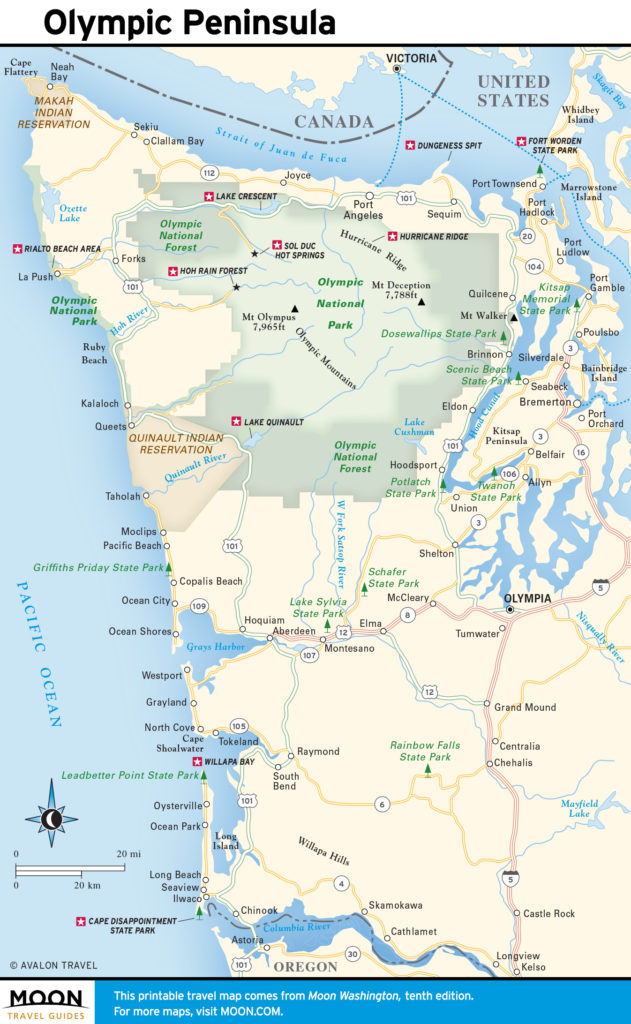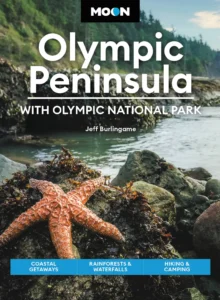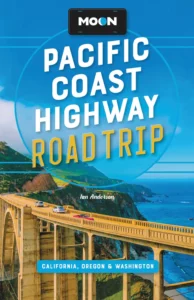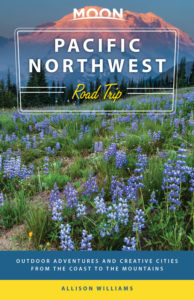Grays Harbor: Hoquiam and Aberdeen
The Olympic Peninsula is cut off from the southern Washington coast by the spade-shaped bay of Grays Harbor, named for an early American sea captain and explorer, Robert Gray. Long the state’s prime lumber port, Grays Harbor still processes huge piles of trees, but in many ways what’s most interesting is the contrast between the two towns here, Hoquiam and Aberdeen.
At the western end of Grays Harbor, tidy Hoquiam (pop. 8,596; kind of rhymes with “requiem”) celebrates its lumber-based history with an annual Loggers PlayDay bash, complete with ax-throwing and tree-climbing competitions, in early September. The rest of the year, get a feel for the bygone days of the lumber industry at the grand old timber-magnate mansion now housing The Polson Museum (1611 Riverside Ave., 360/533-5862, Wed.-Sun., $5), on US-101. Not surprisingly, it’s devoted to local history, with information on logging.
East of Hoquiam along the Chehalis River at the head of Grays Harbor, Aberdeen (pop. 16,654) is much more heavily industrialized and thus has been even harder hit by the continuing downturn in the Northwest timber industry. Grunge-rock hero and Nirvana lead singer Kurt Cobain grew up in and around Aberdeen, which is why the city limits signs says “Come As You Are.” There’s also a couch Cobain may have slept on, and a mural commemorating his 50th birthday, in Aberdeen’s history museum (113 E. 3rd St.). Ace road-trip photographer Lee Friedlander is from Aberdeen too. The downtown area has more than a few rough edges, but it also holds one of the more high-profile of the state-sponsored efforts to move from timber to tourism: Grays Harbor Historical Seaport (360/532-8611, Mon.-Sun., $5 donation), a mile south of Hwy-12. Reconstructions of American explorer Capt. Robert Gray’s ships, the Lady Washington and Hawaiian Chieftain, can be toured when they’re not away on regular goodwill cruises. The original Lady Washington was the first American vessel to visit the area, way back in 1788, and the replica was completed here in 1989 to celebrate the Washington State centennial.
Travel Map of the Pacific Coast through Washington
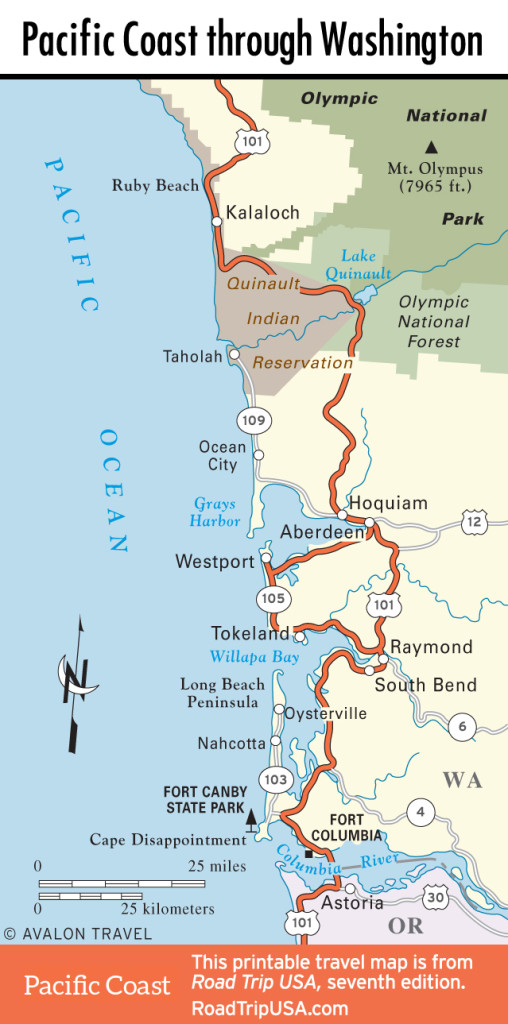
Travel Map of the Olympic Peninsula
